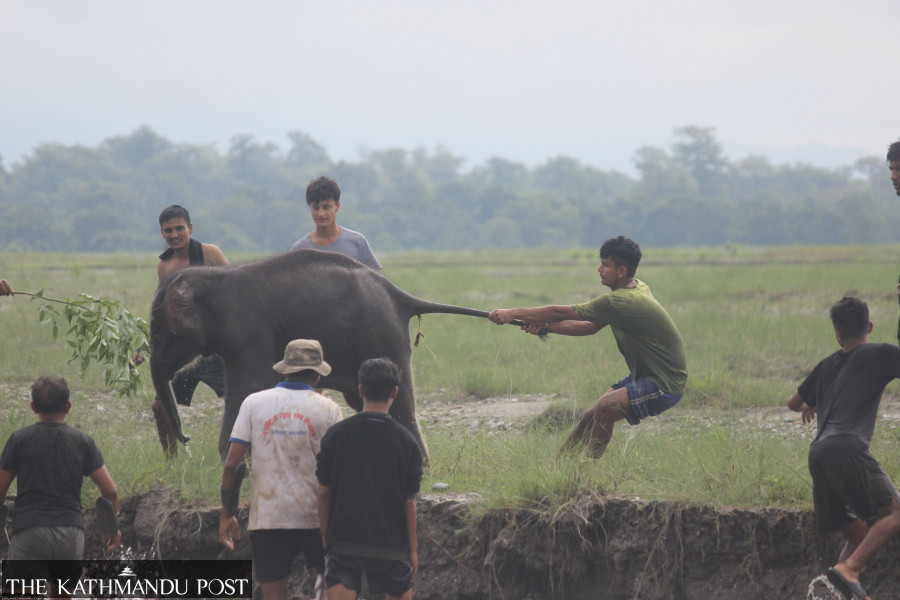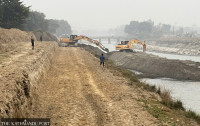National
58 people died in last fiscal year as human-animal conflict gets deadlier
Parliamentary panel recommends engaging communities in other income opportunities.
Binod Ghimire
On March 20 last year, two women from Madhuban Municipality-5 in Bardiya district went to get fodder for their goats in a nearby community forest. They never came back.
Fifty-five-year-old Samundri Budha Chhetri and Dhansari Gurung, 50, had been attacked by a Royal Bengal tiger and killed on the spot. Their bodies were half-eaten when the locals recovered them. Like Chhetri and Gurung, six people lost their lives in tiger attacks in Bardiya, in addition to one from elephants in the previous fiscal year.
"Incidents of attacks from wild animals have increased with an increase in the number of these animals," said Mek Bahadur Gurung, the municipal spokesperson. "An uptick in forest coverage too is responsible for such incidents."
If the records at Bardiya National Park are anything to go by, 38 people have lost their lives to the attacks of tigers and elephants in the last fiscal year alone. The number of such victims since fiscal year 1995-96 stands at 292.
Not just in Bardiya, the human-wildlife conflict has become an everyday event across the country, resulting in the deaths of many people as well as wild and domestic animals, in addition to the destruction of properties worth millions of rupees every year.
A report by the National Concerns and Coordination Committee of the National Assembly shows as many as 58 people had lost lives while dozens of others were injured in the attacks of wild animals in fiscal year 2022-23. Similarly, people mainly from buffer zones lost 6,047 domestic animals and 453 houses and sheds in such attacks in the fiscal year.
Wild animals also have been hugely affected by the conflicts. As many as 172 animals, including tigers and elephants, died in the fiscal year, including 41 in poaching.
"The committee decided to carry out the studies to trace the exact situation of human-wildlife conflict in different parts of the country," said Dil Kumari (Parbati) Rawal, chairperson of the House committee. By forming four panels, the House committee had studied the situations in Chitwan National Park, Koshi Tappu National Park, Sagarmatha National Park and Shivapuri National Park areas. The committee prepared its report after interacting with the officials, locals and experts.
The incidents of human-wildlife conflict have increased with a rise in the forest cover along with the rise in the number of wild animals, according to the report.
Nepal is home to 355 big cats as per a census conducted in 2022. There were 121 tigers in Nepal in 2010, which rose to 198 in 2013 and 235 in 2018. Against the commitment to increasing their numbers to 250 by 2022, the tiger population reached 355—much higher than the goal. The population of one-horned rhinos in Nepal stands at 752, and there are around 400 wild elephants in the country.
The report credits this to conservation works carried out based on the decades-old National Park and Wildlife Conservation Act (1973). "The Act must be replaced with a new one defining the roles of all three tiers of government in conservation," reads a point in the report.
Those living in the buffer zone areas—Chepang, Majhi and Bote communities that are economically and socially backward and rely on forest areas for livelihoods—are most prone to the attacks. The report suggests the government engage the communities in income generation activities so that their dependency in the forests decreases.
The House committee says the existing law envisions government compensation only in losses caused by 16 types of animals, which needs to be expanded to cover the loss caused by all types of wild animals. The maximum compensation for the loss in agriculture is just Rs10,000. The report recommends an increase in the amount.
"Claiming compensation for the cost incurred during treatment for animal attacks is difficult. This needs to be simplified," says the report.




 11.12°C Kathmandu
11.12°C Kathmandu















